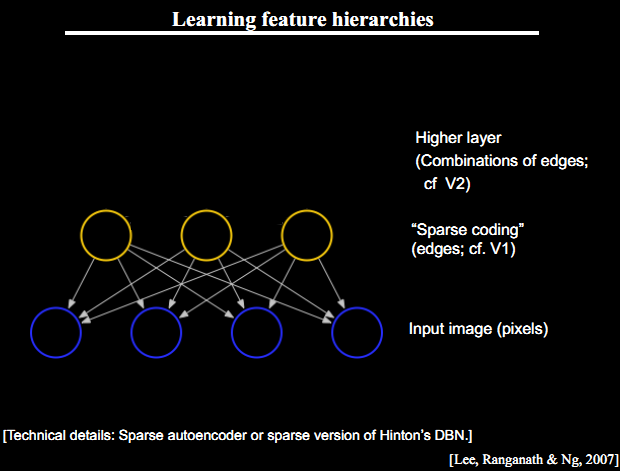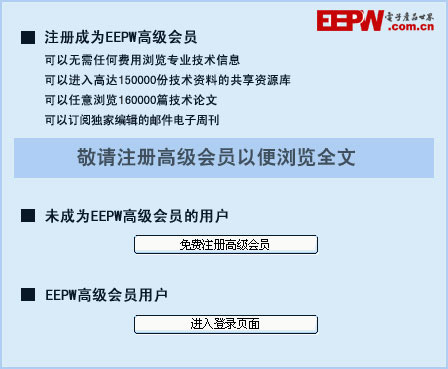機器學習——深度學習(Deep Learning)之我見
Deep Learning是機器學習中一個非常接近AI的領域,其動機在于建立、模擬人腦進行分析學習的神經網絡,最近研究了機器學習中一些深度學習的相關知識,本文給出一些很有用的資料和心得。
本文引用地址:http://www.j9360.com/article/201703/345531.htmKey Words:有監督學習與無監督學習,分類、回歸,密度估計、聚類,深度學習,Sparse DBN,
1. 有監督學習和無監督學習
給定一組數據(input,target)為Z=(X,Y)。
有監督學習:最常見的是regression & classification。
regression:Y是實數vector。回歸問題,就是擬合(X,Y)的一條曲線,使得下式cost function L最小。
classification:Y是一個finite number,可以看做類標號。分類問題需要首先給定有label的數據訓練分類器,故屬于有監督學習過程。分類問題中,cost function L(X,Y)是X屬于類Y的概率的負對數。
無監督學習:無監督學習的目的是學習一個function f,使它可以描述給定數據的位置分布P(Z)。 包括兩種:density estimation & clustering.
density estimation就是密度估計,估計該數據在任意位置的分布密度
clustering就是聚類,將Z聚集幾類(如K-Means),或者給出一個樣本屬于每一類的概率。由于不需要事先根據訓練數據去train聚類器,故屬于無監督學習。
PCA和很多deep learning算法都屬于無監督學習。
2. 深度學習Deep Learning介紹
Depth 概念:depth: the length of the longest path from an input to an output.
Deep Architecture 的三個特點:深度不足會出現問題;人腦具有一個深度結構(每深入一層進行一次abstraction,由lower-layer的features描述而成的feature構成,就是上篇中提到的feature hierarchy問題,而且該hierarchy是一個稀疏矩陣);認知過程逐層進行,逐步抽象
3篇文章介紹Deep Belief Networks,作為DBN的breakthrough
3.Deep Learning Algorithm 的核心思想:
把learning hierarchy 看做一個network,則
①無監督學習用于每一層網絡的pre-train;
②每次用無監督學習只訓練一層,將其訓練結果作為其higher一層的輸入;
③用監督學習去調整所有層
這里不負責任地理解下,舉個例子在Autoencoder中,無監督學習學的是feature,有監督學習用在fine-tuning. 比如每一個neural network 學出的hidden layer就是feature,作為下一次神經網絡無監督學習的input……這樣一次次就學出了一個deep的網絡,每一層都是上一次學習的hidden layer。再用softmax classifier去fine-tuning這個deep network的系數。

這三個點是Deep Learning Algorithm的精髓,我在上一篇文章中也有講到,其中第三部分:Learning Features Hierachy & Sparse DBN就講了如何運用Sparse DBN進行feature學習。
4. Deep Learning 經典閱讀材料:
The monograph or review paper Learning Deep Architectures for AI (Foundations & Trends in Machine Learning, 2009).
The ICML 2009 Workshop on Learning Feature Hierarchies webpage has a list of references.
The LISA public wiki has a reading list and a bibliography.
Geoff Hinton has readings from last year’s NIPS tutorial.
闡述Deep learning主要思想的三篇文章:
Hinton, G. E., Osindero, S. and Teh, Y., A fast learning algorithm for deep belief netsNeural Computation 18:1527-1554, 2006
Yoshua Bengio, Pascal Lamblin, Dan Popovici and Hugo Larochelle, Greedy Layer-Wise Training of Deep Networks, in J. Platt et al. (Eds), Advances in Neural Information Processing Systems 19 (NIPS 2006), pp. 153-160, MIT Press, 2007<比較了RBM和Auto-encoder>
Marc’Aurelio Ranzato, Christopher Poultney, Sumit Chopra and Yann LeCun Efficient Learning of Sparse Representations with an Energy-Based Model, in J. Platt et al. (Eds), Advances in Neural Information Processing Systems (NIPS 2006), MIT Press, 2007<將稀疏自編碼用于回旋結構(convolutional architecture)>
06年后,大批deep learning文章涌現,感興趣的可以看下大牛Yoshua Bengio的綜述Learning deep architectures for {AI},不過本文很長,很長……
5. Deep Learning工具—— Theano
Theano是deep learning的Python庫,要求首先熟悉Python語言和numpy,建議讀者先看Theano basic tutorial,然后按照Getting Started 下載相關數據并用gradient descent的方法進行學習。
學習了Theano的基本方法后,可以練習寫以下幾個算法:
有監督學習:
Logistic Regression - using Theano for something simple
Multilayer perceptron - introduction to layers
Deep Convolutional Network - a simplified version of LeNet5
無監督學習:
Auto Encoders, Denoising Autoencoders - description of autoencoders
Stacked Denoising Auto-Encoders - easy steps into unsupervised pre-training for deep nets
Restricted Boltzmann Machines - single layer generative RBM model
Deep Belief Networks - unsupervised generative pre-training of stacked RBMs followed by supervised fine-tuning
最后呢,推薦給大家基本ML的書籍:
Chris Bishop, “Pattern Recognition and Machine Learning”, 2007
Simon Haykin, “Neural Networks: a Comprehensive Foundation”, 2009 (3rd edition)
Richard O. Duda, Peter E. Hart and David G. Stork, “Pattern Classification”, 2001 (2nd edition)



評論